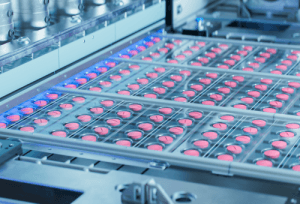Randomized controlled trials (RCTs) have long served as the gold standard for developing and assessing new drugs and devices. However, over the past couple of years, there has been a real push towards collecting and using Real World Data (RWD), rather than focusing solely on the standardized clinical trial method.
What is RWD?
RWD is any information relating to the safety and efficacy of an investigational drug that is collected outside of the strict confines of a traditional clinical trial. This kind of data can come from multiple different sources, including patient registries, electronic health and medical records, surveys, wearable devices, Expanded Access Programs (EAPs), etc. Collecting data from these types of tools allows companies to understand how best to develop and test a new drug and allows regulators greater insight into how a new product will work in the real-life setting, once it is approved.
What are the Benefits of Collecting Real World Data
RWD collection can be beneficial for a drug development program at any stage, from the early planning phases right through to late-stage clinical trials.
Early on, RWD collection can be used to inform and improve the drug development process for a new treatment. Gathering information from patients before any clinical trials have begun allows companies to understand the current medication use among the patient population; the patient attitudes towards treatment; patient behaviors, like the number of hospital visits and how they interact with primary care physicians; and the things that matter most to patients when enrolling in clinical trials. Building this information into the plans for drug development and testing can make new treatments more effective and clinical trials more efficient and conducive to product approval.
It can also be important to consider collecting RWD once clinical trials have begun, especially in situations in which randomization using a placebo is impractical and/or unethical. For many rare and ultra-rare conditions, there are small population sizes and little to no effective treatments available on the market. For these patient populations, it is considered immoral to withhold access to a promising new treatment from some patients and not others, just so that a comparison to a placebo can be made. In such scenarios, it might be better to provide the investigational drug to all clinical trial patients and then collect RWD from patients outside the trial, using the next best alternative treatment option, to provide a comparison.
Another benefit of collecting real world data during the testing phase is that it allows companies to investigate drug safety and efficacy in additional conditions or disease states. As clinical trials are expensive and can run for years on years, it is often impractical for companies to conduct clinical trials in multiple indications. In addition, because pharma’s main goal is always to gain product approval, companies often set very tight inclusion/exclusion criteria that excludes high-risk patients in the chosen indication. This is done to create a restricted addressable population that will produce the desired response to the drug. Finding methods of collecting data from patients who are excluded from the clinical trial, for example running an EAP, can help determine whether running additional clinical trials, that would expand the treatment population, would be worthwhile.
There are also possibilities, during late-stage clinical development, to collect data from patients excluded from the clinical trial in order to supplement trial data when seeking product approval. Companies often choose to concentrate their clinical trial efforts in specific regions, usually those with well-established markets (like the US, the EU, or Japan) or those that provide significant patient populations. However, there will often be patients outside these regions that could provide safety and efficacy data, albeit not through a traditional clinical trial. An EAP, for example, would allow companies to make their drug available to patients outside the clinical trial in a controlled and regulatory-compliant manner. Basic data could then be collected from these patients through medical reports, surveys or wearable devices, etc. that provide physician- and patient-reported outcomes.
Regulatory bodies in the US and EU have recognized these possibilities for generating RWD and are now actively encouraging RWD collection. Both the FDA and the EMA have provided initial guidance documents for the industry, and are expected to issue further guidance in the coming years.




